-853X543.jpg)
पानइंडिया (PaanIndia!)
by Aparajita Krishna September 24 2023, 12:00 am Estimated Reading Time: 18 mins, 43 secsThe history of Paan has mythological as well as historical and Ayurvedic references, writes Aparajita Krishna.
A disclaimer first. This is not to endorse gutka, tobacco and other harmful ingredients used for and as a substitute for Paan, which are harmful for health.
The title of this article could also have been पानभारत!
The culture of Betel-Leaf/Paan-Chewing in India is Pan-India and a subject of anthropological, historical study. It deserves chapters and books for it has been consumed and addressed with a large mouthful. It has been chewed through our history, civilization and also across the times in international history in other countries, namely South Asian ones. Even a cursory googling reads so zyaekedaar (elaborately tasteful) and informative. Supposedly Paan is said to have emerged from the Sanskrit word ’Parna’ which means leaf. The leaves have vitamin C and calcium in good measure.
Herein I am attempting a more personal, intimate, anecdotal chewing experiences.
Paan-leaf and its accompanists like, katha, choona, supari, elaichi, laung, kimaam, zarda/tobacco, gulkand etc. are one of the earliest smells of my childhood back in Muzaffarpur, Bihar, of 1960s, 1970s…words that I grew up with majorly figured: Paan, Pandibba, Paandaan, Peekdaan, Saroata (beetle-nut-cutter), zarda-kimaam (tobacco).
From my three paternal grandmothers, to aunts, uncles, parents, house-helpers, neighbours, all consumed Paan. Across community Paan united a disparate socio-religious-economic-cultural Muzaffarpur and India. I also think that back in time and in decades, women in purdah and ghoonghat, or, women in comparative isolation, or, in widowhood, or, homebound, would have used Paan-chewing as a release of emotions; a friend to fill in the empty spaces of life. Though no doubt Paan was eaten across genders and age-groups.
Banarasi Paan, Maghai Paan and Kolkata Paan are the three famous brands among others. It is said that Magahi Paan is grown in the fields of Nawada in Bihar, and then the Paan-farmers sell it in Varanasi’s mandi from where it is processed. Post the processing this same variety gets named Banarasi Paan. The eating-varieties of Paan are: Saada and meetha.
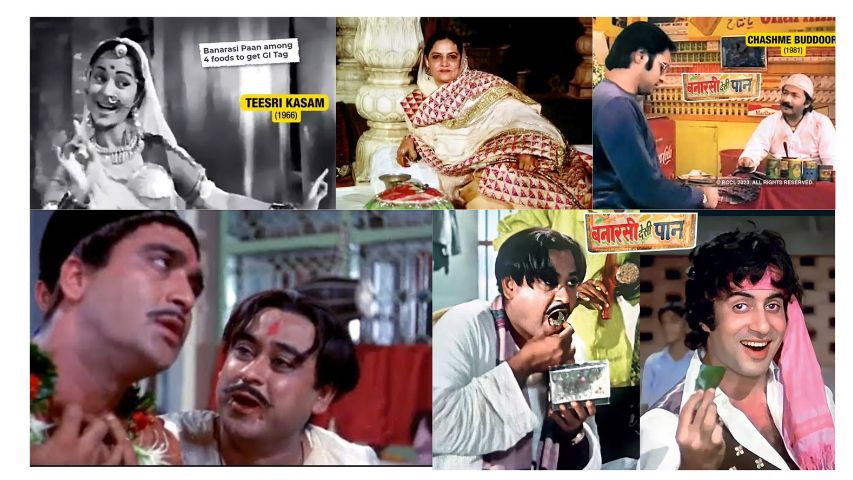
Paan was and is a unifier in India. It cuts across topography, regions, states, religions, castes, gender. Importantly, it has been a major part of our religious rituals. Paan is akin to a sanskriti. It has phrases, kahavats, poems, folk-songs (Neeche Paan Ki Dukaan/Upar Banni Ka Makaan) dedicated to it. Indian literature has served Paan as a leitmotif.
Indian films across languages have all through the years used Paan, Paandaan, Peekdaan as not just set-prop, but almost like a character. The aroma of Paan has served like the mis-e-scene. Hindi film songs have sung Paan. Indian theatre has used it on-stage. Many musicians on-stage and off-stage have performed their acts with a Paan tucked in their mouths. There is a gallery of Indian film-television Paan-Acts by men and women. Here I am mentioning just a few that stay with me.
The sublime Paan-weaving and chewing in Satyajit Ray’s Charulata (1964) stays in my memory. Confining myself to Hindi films, Waheeda Rehman sang-enacted it beautifully in Teesri Kasam (1966), ‘Paan Khaye Saiyan Hamaro’. In Padosan (1968) Guru Kishore Kumar delectably chewed Paan dripping from his mouth to teach and prompt his disciple Sunil Dutt lip-sing the song Ek Chatur Naar Kar Ke Sringar. Amitabh Bachchan immortalized Banarasi Paan in Don (1978) as he performed the song ‘Khaike paan Banaras wala khuli jaye bund akal ka tala…’.
Chasme Buddoor (1981) had Saeed Jaffrey essay the role of Lallanmiyan, the local Paan-cigarette shop owner. Govinda sang ‘Paan ka ek bida khila do phir chaal dekho Banarasi Babu Ki’ in Banarasi Babu (1997). SRK had to Don (all puns intended) the Paan-act of Amitabh Bachchan in the Don remake, but AB’s act goes unmatched for me. Among the female characters Meena Kumari has enacted roles with Paan-eating as an expression.
In Hindi cinema Bimal Roy’s Devdas (1955) has Paandaan, Saroata, Beetle, Beetle-Nut as property naturally being used by actors. Devdas remake version by Sanjay Leela Bhansali in 2002 opulently created a mise-en-scene with Paan-tools lying around and Jackie Shroff-rupi-Chunilal chewing Paan in a scene or two. Gurudutt’s films and Hindi films placed in a Bengali milieu had Paandaan, Paan as a presence in scenes. Many Hindi films set in Bengali environs featured Paan or accompaniments as mandatory set-property. Muslim Socials in Hindustani cinema had the Paan ambience as a definite setting. Pakeezah also comes to mind.
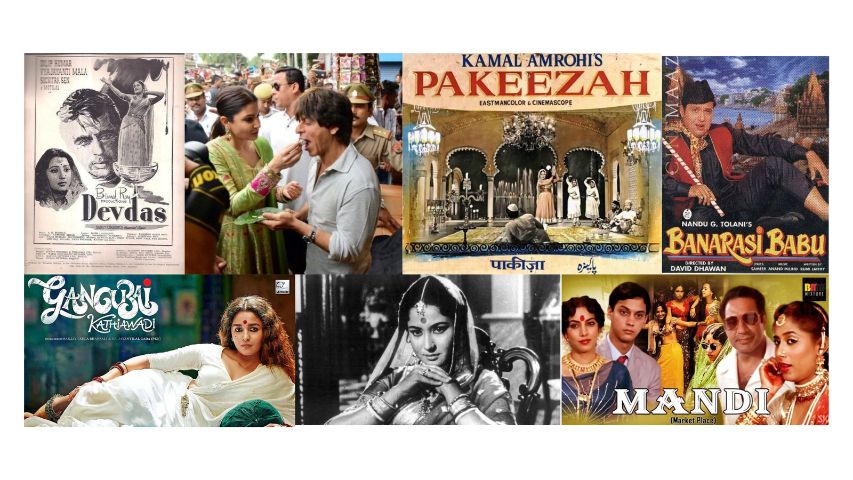 To come to more noted portrayals with Paan in Hindi films, Umrao Jaan (1981) had Shaukat Azmi as Khanum Jaan savor Paan-Hookah in her commanding act. Shabana Azmi’s act as the Paan-serving and chewing brothel-madam Rukmini Bai in Mandi (1983) was admirably authoritative and manipulative. “Guptaji, Paan ke saath kimaam shauk farmayeinge aap?” Decades later in 2006 Shabana Azmi would justifiably apprise her mother’s role with dignity in an otherwise most opulently-mediocre version of the original Umrao Jaan.
To come to more noted portrayals with Paan in Hindi films, Umrao Jaan (1981) had Shaukat Azmi as Khanum Jaan savor Paan-Hookah in her commanding act. Shabana Azmi’s act as the Paan-serving and chewing brothel-madam Rukmini Bai in Mandi (1983) was admirably authoritative and manipulative. “Guptaji, Paan ke saath kimaam shauk farmayeinge aap?” Decades later in 2006 Shabana Azmi would justifiably apprise her mother’s role with dignity in an otherwise most opulently-mediocre version of the original Umrao Jaan.
Cut to film Gangubai Kathiawadi (2022), a biopic on the real-life female protagonist, Gangubai Kothewali, a sex-worker at Mumbai’s Kamathipura and an activist in her own right. Her life story got documented in the book Mafia Queens of Mumbai, by S. Hussain Zaidi. Alia Bhatt essayed the powerful role with aplomb, including the Paan-eating act.
Interestingly, before the release of the film, a controversy erupted wherein real life Gangubai’s family took umbrage, objection to the film, claiming harm to her true legacy. Grandson Vikas Gowda and daughter Babita Gowda are reported to have said (ETV Bharat-Feb 22, 2022) “Our dignity is at stake. How are we going to face people after being portrayed like thus? The film has so many things that do not hold true. Even remotely. My grandmother never used cuss words, did not eat Paan, she did not have an Impala car, neither was she a violent woman who harmed or killed people.” Note herein the Paan mention. (My smiling emoji).
In India Paan-shops have over the years grown from being modest, intimate dukaans to Paan-Parlors, opulent branded outlets in malls and shopping centres. It also has a NRI and foreign footprint now.
This article is also akin to Paan ki tareef karne ka ‘bida’ uthana! I have herein undertaken the ‘challenge’ of writing a tribute-essay on Paan. Ek bida Paan mein dalte hain kai samagri. Many ingredients go into making one slice of Paan.
Sharing herein precious Paan anecdotes, recalls, from noted persons. It has thus become a collective act.
Ashok Mishra (theatre-film-television writer-director and actor)
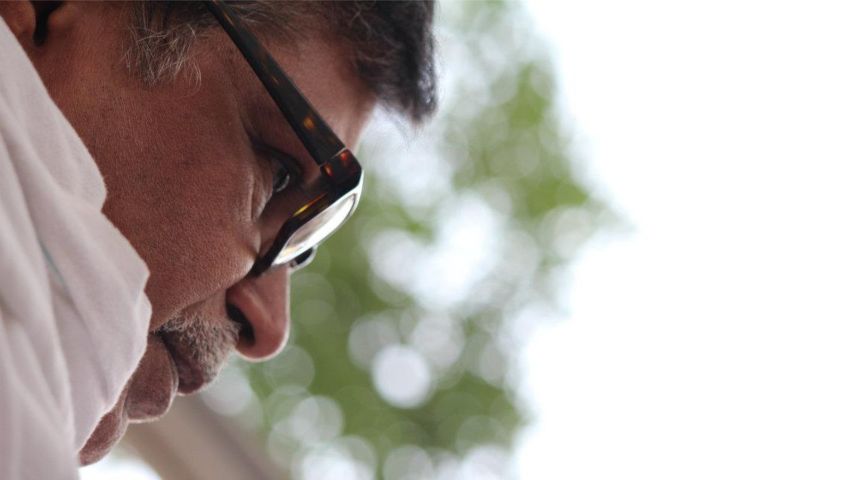
It surprises me whenever I think of the invention of Paan. I don’t know at which point of time in human civilization, evolution, and at which place of exact origin would someone have made that first bida of Paan! And, to whom would that person have fed that first Paan? Paan has been the shaan and glory of the Mughal Darbar and matter of majestic prestige for the Rajputs. Back in history, while undertaking the pledge of war to defeat the enemy, log bida uthate theh. History is witness to the royalty consuming Paan. Paan was among the first offerings offered to the Gods. There has been a tradition in our marriages to decorate a kalash/utensil with Paan leaves. Then we have had Shammi Kapoor say in an advertisement to Ashok Kumar, ‘Hum itna chahate hain ki aap baratiyon ka swagat Paan-Parag se kijiye!’
Paan has been lucky for me. I had written a song on Paan thanks to which the noted director Aziz Mirza gave me the opportunity to write for the tele-serial Intezaar (1989). Till date Aziz Bhai recalls the song with great fondness. Later in years one day I had gone over to Red Chillies Entertainment office to meet Aziz Bhai. Juhi Chawla was also sitting there. Aziz Bhai asked me to recite for her the song I had written on Paan.
Once I happened to meet Aziz Bhai along with a foreigner. He again asked me to narrate that song. I said, ‘How will the foreigner understand the language?’ He said he will simultaneously keep translating. Till date whenever we get talking over phone, he asks me to recite that song. Meri kismat banana-wala paan-gaan kuch yun hai. A nautanki-wali girl sings the song. “Honth rach gaye dono mere khaya aisa paan/Maine khaya aisa paan!/Gaon-gali mein shor mach gaya/dhuk-dhuk hote jaan!/Katni ka choona, Dilli ka zarda, Kanpur ka katha, Banglori supari jismein, Kalkate ka patta/ Aisa bida kaahe banaya panwari baimaan!/Hoonth rach gaye dono mere…”
Since childhood one had heard that the paan of Mahoba zila in Uttar Pradesh is very reputed. It is said that if one drops that betel leaf onto the floor then like glass it shreds into pieces. I could not believe this. Some months back along with director Yashowardhan Mishra I had gone for the research work of film Kathal to Mahoba. We took a betel-leaf from a shop and dropped it onto a stone. The betel-leaf broke into pieces, like glass-pieces, or, one can say as an imagery that it broke into pieces like a lover’s heart.
One recalls the song from film Teesri Kasam, written by Shailendra. ‘Malmal ke kurte pe cheent laal-laal, paan khaye Saiyan hamare’! Shayer ki pakad dekhiye. Paan khane waala chahe kitni koshish kar le, bach nahi sakta. Kurte pe Paan ke laal-laal cheetein uske ishq ka pardafaash kar hi dete hain!
Banaras/Varanasi is also famous for its Paan! School and college girls going on rickshaws have Paan tucked into their mouth. Teachers too eat Paan with abandon. So much so that the pall-bearers who carry the dead bodies too have Paan tucked into their mouth. And to top it, just before the cremation, if the dead person has been a Paan-eater, then customarily a Paan is now kept into the dead body’s mouth. A gilori of that Paan just melts into the mouth.
The film song written by Anjaan Saheb, 'Kaike paan Banaras wala, khul jaye band akal ka tala…’ became so popular! Indeed, after eating a Banarasi paan the brain, mind gets unlocked and opens up! No surprise that many poets, writers, lyricists, before putting their words on paper first pick a bida of Paan and put it in their mouth.
Imagine a bida of Paan costing Rs 5000, 10000! I once ate a Paan and then asked for the amount to pay. The Paanwala said ‘Rs150.’ I caught myself in a fix! Should I gulp down the Paan juice or spit it out? I wondered who bought such expensive Paans? The Paan-wala informed me, “Film-waale. Our Paan goes to many film-offices. It goes for marriages, functions. Paan ke shaukeeno ki koi kami nahi hai Saheb’.
In Uttar Pradesh try looking for a person, man or woman, who has never eaten a Paan in his/her life! Aap dhoondhte hi reh jaayenge. Atah yahi kahoonga “Paan kha gayak sur mein gaaye/Nachaniya mehfil mein chhaa jaaye/Paan ishq mein rang jamaye/Toote dil toh malhum lagaye/Khane wala bhi pachchtaye/Na khane wala bhi pachchtaye/Paan ki mahima kahi na jaye!”
Joy Bimal Roy (Writer, Author, Filmmaker)
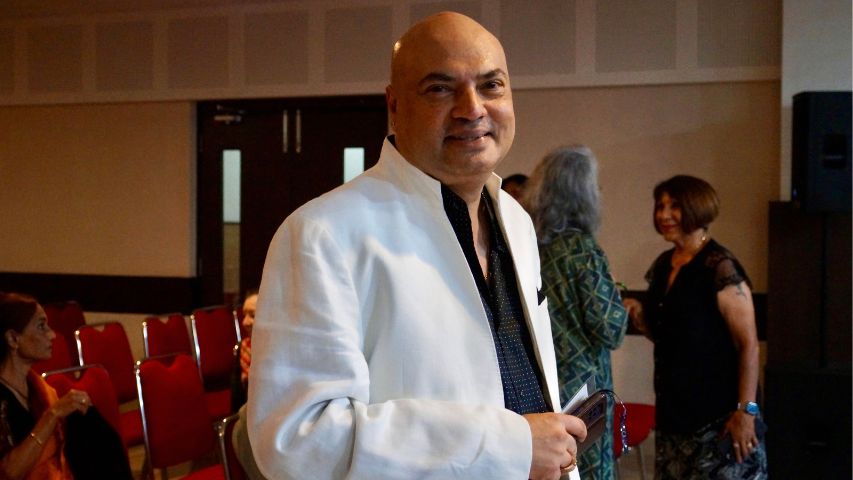
Paan always reminds me of my mother, Manobina Roy. Ma was addicted to Paan and made it for herself at home. I would sometimes ask her to make me one, which I would chew with utmost relish. My father, Bimal Roy, was not a Paan-eater. Paan Lovers have an unspoken bond. I still remember an incident, which happened 50 years ago. We had landed at Hyderabad airport and Ma was hankering for a Paan. We spotted a lady sitting with a beautiful silver Paan-box with all the ingredients and assembling a Pan for herself. Ma was drawn to her like a magnet. Ma came back smiling and told us that we were all invited to the lady’s place for dinner the following night. It turned out that the lady lived in a huge bungalow and had a retinue of staff. The food was superb. And all this because of one Paan exchange at the airport. I don’t know if something like this can happen in today’s world, but Paan could break social barriers at one time and unite people.
It happened again a few years later when we visited Assam. The legendary singer Bhupen Hazarika became our guide. Paan is a big thing in Assam, but it is different from other places because of a special ingredient ‘guan’ supari. Betel nuts are soaked and fermented and the effect is deadly on the uninitiated. I still remember sampling it and my head reeling and the world spinning out of control around me. Bhupenda was vastly amused, but I wasn’t. But Ma loved it and chewed it happily for the rest of her stay. Ma, Bhupenda and the Hyderabadi lady are all gone, but the memories remain. To me Paan symbolizes grace and dignity, qualities which are rare in today’s times.
Arunoday Sharma (FTII alumni, Former film/TV sound-recordist, Advisory panel member at Central Board of Film Certification)
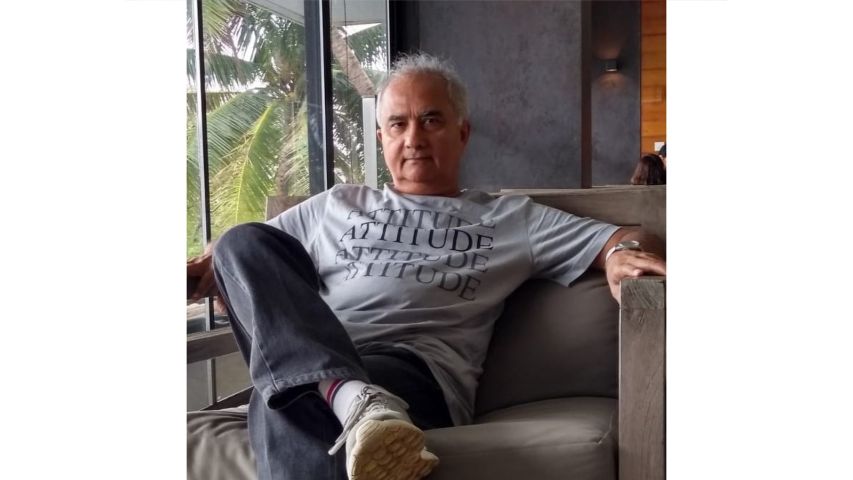
Paan! Millions, may be billions, eat or chew Paan in Bharat. Yet no one thinks about it as a ‘thing’ to think about and write. It is just to eat, chew, and spit on the already coloured walls. For millions it is an addiction. Paan was given royal status by royalty. They would be stored in brass or even gold dabbas. Tall Peekdaans were also made ornately in brass for the royal red spit.
My earliest memory of this leaf is when I was 4 or 5 years old. My parents would go for a short stroll after dinner and come back with their mouth full, chewing on something that I realized had a great fragrance. Initially I slept over it. But at one time when they returned with their mouths full, I protested, “I also want”. That day after crying for long, mummy took out a chewed-up part from her mouth and put it in mine. Wow! I loved it! That was my first encounter with this leaf. I could never have got a full Paan solely for myself, because it was too big for me, or, I was too tiny for it. I also fancied people getting red-mouthed due to Paan.
Later I finished my college and came to study at the Film Institute in Poona. I would watch people eat Paan, but that kind of eating/chewing put me off. I felt they were addicted to it, due to the tobacco in it. And most repulsive was the spitting part. It had to be spitted and they would do it on fixed spots: the entrance of a toilet, corner of a staircase etc.
Paan is something that needs a mental kick. After having eaten a meal, a well-deserved break from a mentally tiring dubbing job etc, you come out for a breather and happen to pass a Paan shop. “Haan bhai ek saada Paan bana dena. Kalkatta, star, laxmi, chatni, katri supari. Ilaichi usmein matt dalo, mujhe haath mein de do.”
I was never a regular Paan-eater, except for the time when Mehboob Studio Mumbai, became my first/second home for more than 12 years. It had a Paan shop on the right of the canteen. Lunch break during film shootings was a luxurious one hour! So, a leisurely walk to the shop would happen and I would just stand in front of the shop and the Paan would be handed to me soon. The famous Amitabh Bachchan song, ‘Khai ke Paan Banaras wala’ was shot in Mehboob Studio lawns. That Paan shop surely must have been in the background. After my Mehboob Studio days got over, Paan ceased to matter. I feel it calls for the mood or a company. Perhaps like a cup of tea, that can happen any time.
Many Paan shops have turned into status symbols, like the Mishra-Paan-Bhandar at Juhu, Mumbai. Also, the one outside Mahesh Lunch Home makes famous ‘Maghai Jodi’. I believe there are Paans that cost around 5000 rupees or more. They have chocolate and various mithai Paans. Now I may eat a Paan once in two months or so, but if I don’t get that one Paan in 2 months, I start getting withdrawal symptoms!
Jayati Bhatia (Actor)
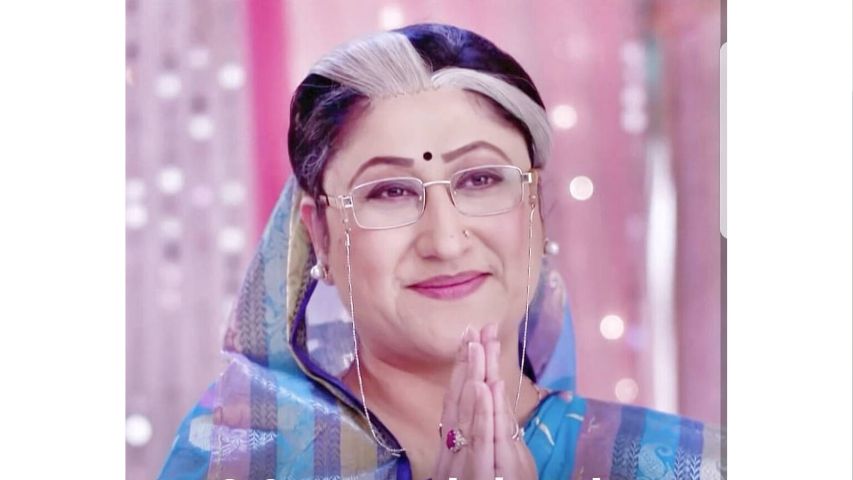
My earliest memory of Paan is of my Baba and Ma having it after a good Bengali Sunday lunch. Baba was a regular Paan-eater, but Ma ate on special occasions. I remember Baba ordering Paan with saadi-patti, peeli-patti and kimaam with geeli supari. For Ma Paan was saada-paan with katha and chaman bahar. And on very special occasions when my parents were really very happy with us, me and my Dada (brother) would be treated to Banarasi Meetha Paan with extra gulkand and patli kati supari. Introduction to Maghai Paan happened in Mumbai. Paan is still the excitement after a long and happy Mughlai dinner with friends and family. It reminds me of my childhood days when life was easy and innocent.
As an actor I had to eat Paan in one of the tracks of tele-serial ‘Sasural Simar Ka.’ It took me a day to get used to speaking with a mouth full of Paan. Sometimes the betel would pop out, or, the juice kept flying out of my, or, my co-actor’s mouth. By the fourth day my mouth was burnt because of the chunaa/lime. It became so bad that I could not eat, or, speak properly for a few days. I realized there is no point in getting so realistic. So, I started ordering Paan with only katha and sounf. Made life easier.
Grusha Kapoor (Actor, Devyani of the first Indian feminist series, Tara)
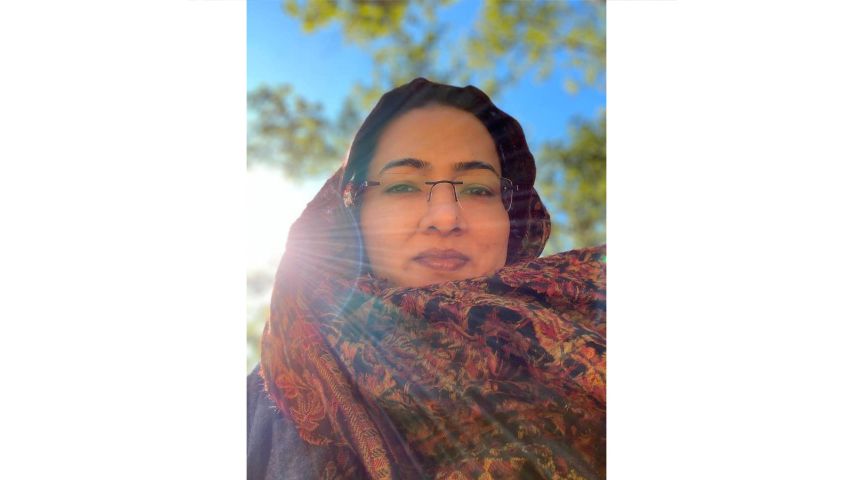
Paan has been a part of our life. My earliest memory of Paan is of my Nani’s (maternal grandmother) Paandaan. In that would be kept supari, katha, chuna, tambaku, and the betel-leaves wrapped in a wet red cloth. Then there used to be the saroata, instrument to cut the supari. The Paandaan was of peetal metal. I have always seen her having Paan. Then when I grew a little bigger, I saw my father, Ranjit Kapoor (veteran theatre-writer-director-actor), constantly have his Paan.
Papa was brought up in Lucknow, which was a nawabi place. Then came our stay at Bhopal. Here after a meal it would be offered - ‘Paan nosh-farmayiye!’ Paan was given a lot of respect. A delicacy! It was Anil Chaudhary Uncle who taught Papa to have Paan. And Papa taught him to have alcohol. They were batchmates at the NSD, Delhi. My father is a connoisseur of Paan! In every place, city, town, there are fixed shops from where his dosage of Paan comes. He has his favourite Paan-shops. Till today he has 15 Paans in a day and with complete reverence. I have seen him have Paan for all of my 45 years. He is worthy of an Oscar as far as Paan-eating-act goes!
Paan has been a part of our culture since childhood as also of our films. It has its own identity. Papa’s was the Calcutta Paan! He would put a bit of kimaam in it. Kimaam ki bheeni bheeni khuhsboo ghar mein rehti thi. Paan for me is very nostalgic.
In our films too it has been picturized and given royal treatment. Like in Satyajit Ray films. Then in Pakeezah.
Paan is mentioned in our Vedas. It is offered in our Indian religious rituals. Over the passage of time, it changed in colour and taste. It is said that Paan was born in India. Dhanvantariji (physician of the devas in Hinduism, God of Ayurveda) is said to have discovered its health benefits. It is found in Persia, Central Asia, South-East Asia.
Nowadays at marriages there are Paan-Counters! A single Paan can also cost 100 or 150 rupees! Status symbol!
Paan is biodegradable. Paan has a nazakat. Barring the tobacco, the other ingredients in Paan are not harmful to health. Gutka is very harmful.
I have seen poets, writers, intellectuals carry Paan in their silver coloured dabba in their hand. With delicacy they would take out a Paan, put it in the mouth and start their recitation of poetry, couplets. Paan leads the way through discussions, invigorating talks. I too am fond of Calcutta sada, meetha Paan with gulkand.
Times changed. Paan got replaced by gutka, which is very harmful. In earlier days people chewing Paan would not spit all around. They had the Peekdaan to spit in. The gutka-eaters spit just about anywhere. Paan ki garima chali gayi.
Anubha Sawhney (Desperate Housewife)
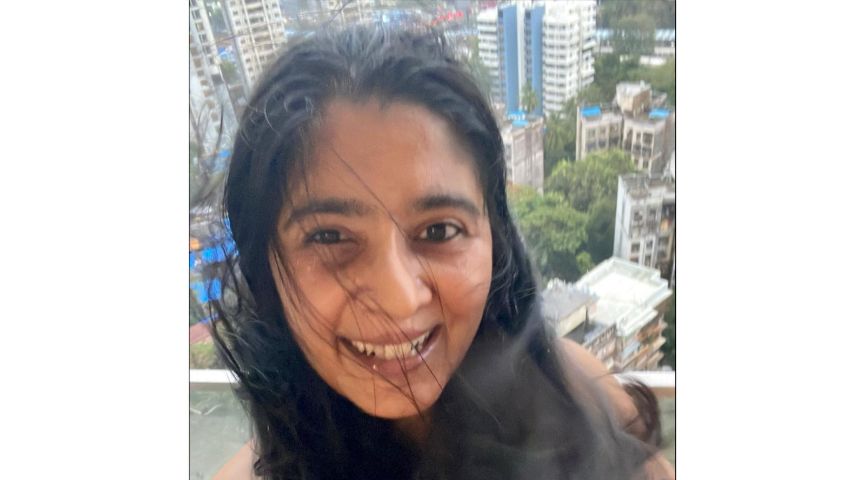
Katha, chuna, elaichi, supari, I can rattle this combination off in my sleep because it was the recipe for my Dadi’s (paternal grandmother) favourite Paan and she would want to have it every day! Daadi was a Punjabi-Khatri girl - born, bred and buttered in Bihar’s Muzaffarpur. Having Paan was second nature to her.
Since I grew up with my parents and grandparents, I saw this Paan-eating culture early on. And because Paan was forbidden for me, my mother would have a fit if I went anywhere near betel leaves, it became even more enigmatic and mysterious. Dadi, always the diva, would go into siren-mode with Paan in her mouth and a faraway look in her eyes - oh how I wanted to be her!
Growing up in Delhi, the only Paan I got to taste was the gulkand-wala meetha variety that connoisseurs like Dadi would look-down at the very thought of. It was only years later, when I was almost out of my teens, that I first got to try saada Paan. I was hooked! Kalkatta-sada is my go-to now.
When I met my husband, an Uttar Pradesh boy with an informal PhD in Paan ke Patte, I knew Dadi would love him! The two got along famously. He would bring her some Paan and she would secretly hope he’d spiked it with ‘something extra!’ He never did.
And so, Paan-India continues to bond us in its own nourishing way!




-173X130.jpg)
-173X130.jpg)
-173X130.jpg)
-173X130.jpg)
-173X130.jpg)
-173X130.jpg)

-173X130.jpg)